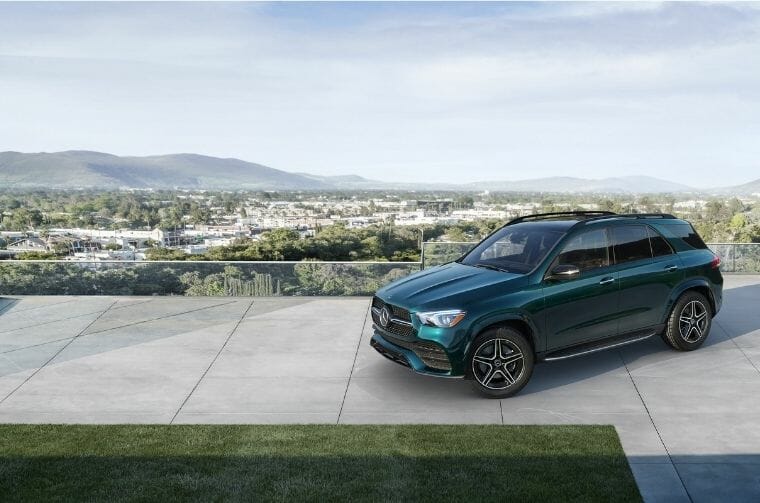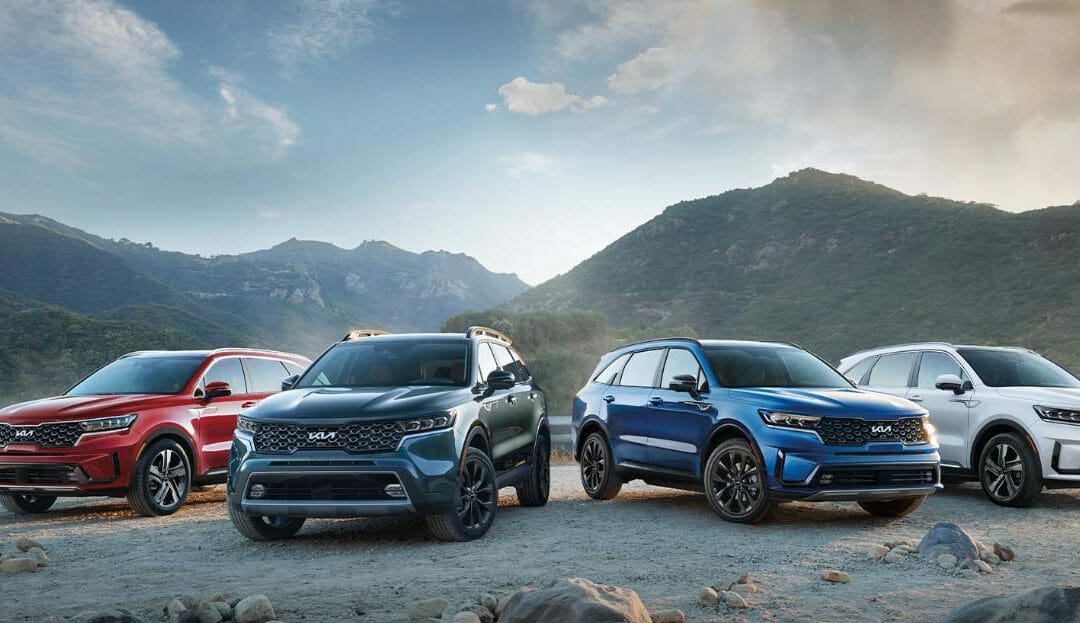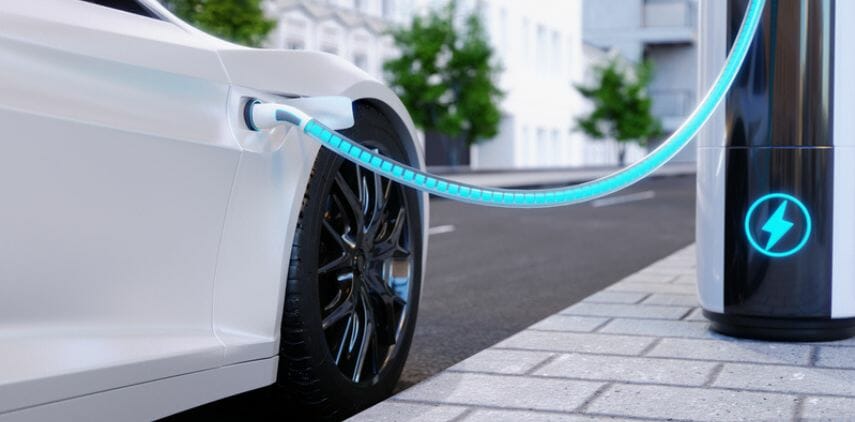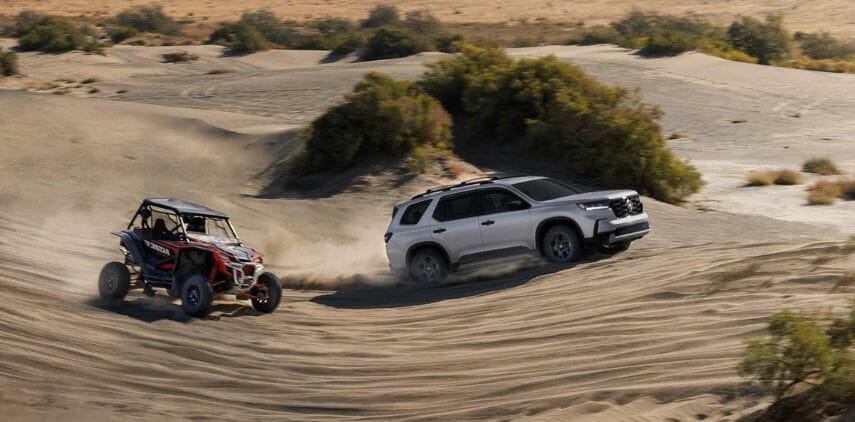Overview
We all know that SUVs have become the top trend in the automotive market. Nowadays, it is easy to see models of all sizes, purposes, and prices available across pretty much the whole world. While this phenomenon is excellent for customers, because it provides them with options of all types, it may also make it difficult for them to understand the characteristics of each option to choose the best one.
We are here to put an end to the standard SUV vs midsize SUV debate and find out which one’s the right choice for you.
As you are going to see, “standard SUVs” used to be the only type of SUVs available. The segment was created in the late 1990s with generalist models such as the Dodge Durango and the Ford Explorer and took off a few years later thanks to the participation of luxury automakers like BMW and Mercedes-Benz, which started their SUV lineup with the X5 and the ML-Class respectively.
Over the years, more models were released and the whole SUV market deserved to be subdivided into categories that are typically divided by size. This article is going to explain the differences between two of those subcategories, midsize and standard, and uses several practical examples to make everything easier to visualize. Let us help you reach a conclusion in the standard SUV vs midsize SUV debate, and find out which one’s the right choice for you!
Table of Contents
Midsize vs. Standard SUV – What’s the difference?
Whenever a new market trend obtains solid sales volumes over time, the industry develops it into a regular category. In other words, more and more automakers choose to design a model to take part in it and more people feel inclined to buy them instead of cars of the other established categories.
Sport-utility vehicles (SUV), for example, used to be of only one type, the one which is now named “standard SUV”. Since this body style became highly popular, the number of SUVs on sale increased so much to justify creating subdivisions of the original segment. One of them is called a “midsize SUV”. This article aims to compare both those segments in order to better understand each one.
Is a standard SUV bigger than a midsize SUV?
In the standard SUV vs midsize SUV debate, the former has an upper hand in terms of space. By definition, a standard SUV is bigger than a midsize SUV. Let’s take examples to make this comparison easier: the brand new Wagoneer was designed to become Jeep’s first standard SUV in years, whereas the top-selling Grand Cherokee has always been a strong example of a midsize SUV.
SUV
Type
Measurements (length x width x height)
Speaking of external dimensions, the Wagoneer measures 214.7 x 83.6 x 75.6 inches (length x width x height) while the two-row Grand Cherokee reaches 193.5 x 77.5 x 70.8 inches – the Wagoneer is roughly 11% longer, 8% wider, and 7% taller. Those differences are directly related to the available volumes for passengers and cargo on each model.
What is the difference between an intermediate SUV and a standard SUV?
First of all, we are going to consider “intermediate” the same as “midsize” in this analysis; both are common terms that describe the same subcategory of SUVs.
As previously mentioned, the most important difference is in dimensions because it affects the internal volume. A three-row midsize SUV, for example, will always offer less room for seven people than a standard SUV. On the other hand, smaller size often makes the former easier to steer, which is particularly interesting for this type of automobile if you drive in the city most of the time.
Standard SUVs are usually derived from heavy-duty pickup trucks, so they have body-on-frame construction. Midsize SUVs have more parts in common with city models, so they favor the unibody layout. In practice, that difference makes the former somewhat sturdier, and cheaper to repair, but there are many other variables capable of influencing those criteria.
A more expressive consequence of the previous topic is that standard SUVs tend to be heavier, so they require larger engines. We cannot even consider that the additional power makes them faster because that is not a priority of their project; the truth is that standard SUVs end up with similar performance and worse fuel efficiency than midsize SUVs most of the time.
Besides all that, standard SUVs are interesting options to consider in case your towing demands are large. Heavy body, powerful engines, and all-wheel drive make them sturdy enough to safely tow trailers or boats, for example, because they will be able to better counter the adverse movements caused by towing another object of comparable dimensions and weight.
Decades ago, it was also possible to deem standard SUVs safer in case of a collision due to their size, but that is no longer a universal truth. Modern automobiles are designed with a series of electronic and physical systems to prevent and mitigate a collision, and several types of steel to spare the cabin from absorbing impact energy. That applies to all categories of SUVs.
Finally, midsize SUVs have become a global category while the standard ones are popular only in a few selected regions. Since the former has a broader market scope, automakers feel encouraged to invest more in their lineup: they usually receive many options of trim level and powertrain, not to mention limited editions. Standard SUVs tend to keep their original offering untouched.
What’s better – midsize or standard?
In the battle of standard SUV vs. midsize SUV, the biggest question is, which one is a better option as a whole, considering efficiency, handling, performance, price, space, safety, size, and towing.
It is necessary to tread carefully here: each automaker has its own internal structure, so the safest way to properly compare those categories is by taking a pair of examples from the same company, just like the Jeeps mentioned here earlier. Keeping in mind that and the other concepts already explained, we can make this analysis somewhat more objective:
| Category | Efficiency | Handling | Performance | Price |
| Midsize | Better | Better | Better | Better |
| Standard |
| Category | Space | Safety | Size | Towing |
| Midsize | ||||
| Standard | Better | Better | Better | Better |
It is also important to notice that quantifying those parameters depends on each pair of models in analysis. For example, the Toyota Sequoia’s base price is 43.4% higher than the Highlander’s; they are respectively the company’s standard and midsize SUVs in North America. That percentage is highly variable once we consider models of different brands.
Last, but not least, it is necessary to keep in mind that you are the only person who can effectively decide which SUV is “better” for you. You have to consider how many people will usually ride with you, where you plan to drive the car, how much you can spend on it, and which emotional traits are important to you, such as futuristic design, sharp handling, or warm color palette, for example.
Once you gather information about what you want from an SUV and what the available models can offer, it will become much easier to decide which category and which model is the most suitable.
What are some examples of midsize SUVs?
Here, we are going to mention five examples currently on sale. They all have three rows of seats for a total of seven passengers, although some offer the rearmost row as an optional item. They are a sample of what such a vast market segment has to offer.
Dodge Durango
It has been in the same generation for a decade and its fuel efficiency and technology pack show it. However, it has been the most powerful SUV ever produced and its style and current performance versions also show it. If you want the family to enjoy the road trip more than the actual destination, the Durango is definitely the best midsize SUV for you to choose.

Source: www.dodge.com
Ford Explorer
Typical family model: roomy cabin for people and cargo and comfortable ride. However, the third row of seats is too small and the upscale trim levels may become excessively expensive. The Lincoln SUVs show a similar level of overall capability while being more comfortable and elegant at once.

Source: www.ford.com
GMC Acadia
Well-rounded cabin with handsome design and intuitive infotainment system. It should be a solid competitor in the category, but low fuel efficiency and cramped rear seat row harm its value. Just like its big brother Yukon, it suffers internal competition from the other equivalent GM models.

Source: www.gmc.com
Lexus RX
If you are looking for a family-friendly model, the comfortable ride, many safety items, and high fuel efficiency will surely catch your interest. You may only have trouble using its infotainment system. Besides, the sportiness of this model has been concentrated on its design, not on performance.

Source: www.lexus.com
Mercedes-Benz GLE
One of the first midsize SUVs has aged like wine: while the design has had evolutionary updates, the cabin has become exponentially more tech-savvy and comfortable for five people – a third seat row is also available. The problem is that its German origins account for stiff rides and expensive prices.

Source: www.mbusa.com
What are examples of standard SUVs?
Here, let’s take a look at some standard SUV models. For the sake of comparison, four of them are the “step above” on a given automaker’s lineup, such as the Explorer and Expedition for Ford. The Jeep Grand Wagoneer is not the respective equivalent of the Dodge Durango, but they were selected for being under the same parent company, Stellantis, and having rather different purposes (performance and luxury).
Ford Expedition
It offers a roomy cabin, comes equipped with a competent engine, and 9,300 lb of towing capacity. Unfortunately, the ride quality is lower, the fuel consumption is higher than in the Explorer, and the prices of the upscale versions are even higher. If you need even more space, you can opt for the Expedition XL.

Source: www.ford.com
GMC Yukon
The roomy cabin is moved by a series of powerful engines with a refined ride. However, that takes a toll on fuel efficiency and the SUV suffers internal competition from the cheaper Chevrolet Tahoe and from the fancier, more tech-savvy Cadillac Escalade. A long-wheelbase version is available.

Source: www.gmc.com
Jeep Grand Wagoneer
Full-size station wagons and, later, SUVs have become symbols of the American way of life and this model takes pride in that. Plenty of space for seven with elegance and comfort, a big V8 engine under the hood, handsome design– everything is there. Including the little concern with fuel efficiency.

Source: www.jeep.com
Lexus LX
The new generation was completely updated and features an irresistible combination of off-road capability and plush interior. The downsized V6 engine is expected to make it more fuel-efficient. While losing the internal competition of the Land Cruiser is good, it does not offer a long version.

Source: www.lexus.com
Mercedes-Benz GLS
The expensive price tag is justified by plenty of room in all rows, cutting-edge technology, and an overall level of luxury which is simply breath-taking. The problem is that the best trim levels are even more expensive – it even has a Maybach version with exclusive trim and even more items.

Source: www.mbusa.com
Final thoughts
Standard SUVs were initially created to combine off-road capability with a comfortable and fancy cabin. Once the category became successful, newer models were designed to go even further in comfort, ride quality, and high performance; standard SUVs became a market niche of their own with rugged construction and conservative design.
Nowadays, deciding between those market categories is a matter of understanding how important off-road capability is to you. Standard SUVs take it as a priority in exchange for some ride refinement and a lot of fuel efficiency. They are recommended for large, wealthy families which take road trips that frequently go beyond the urban environment.
Midsize SUVs, on the other hand, offer a group of characteristics that places them much closer to urban cars; some of them may be considered the modern successors of the station wagons which used to be famous especially in North America. While most of the available models do not handle so well off the road, they generally perform better at daily use.
As mentioned before, keep in mind that you are the only person who can say which SUV is the best for yourself. And the best way to do that is by understanding what exactly you need from them and what each model can offer. Once you have both ideas clearly drawn, even the process of browsing through websites and dealers will be more pleasant. Good luck with your next purchase!
[/dipl_faq_page_schema_item][dipl_faq_page_schema_item faq_question=”2. Standard SUV vs midsize SUV: Which is better for towing?” _builder_version=”4.18.0″ _module_preset=”default” question_heading_level=”h3″ hover_enabled=”0″ global_colors_info=”{}” sticky_enabled=”0″]
Between standard and midsize SUVs, the latter is better equipped for towing.
[/dipl_faq_page_schema_item][dipl_faq_page_schema_item faq_question=”3. How many people fit in a mid-size SUV?” _builder_version=”4.14.7″ _module_preset=”default” question_heading_level=”h3″ global_colors_info=”{}”]Typically, midsize SUVs have a capacity for 5 people, but it can go up if you have a third row. [/dipl_faq_page_schema_item][/dipl_faq_page_schema]






